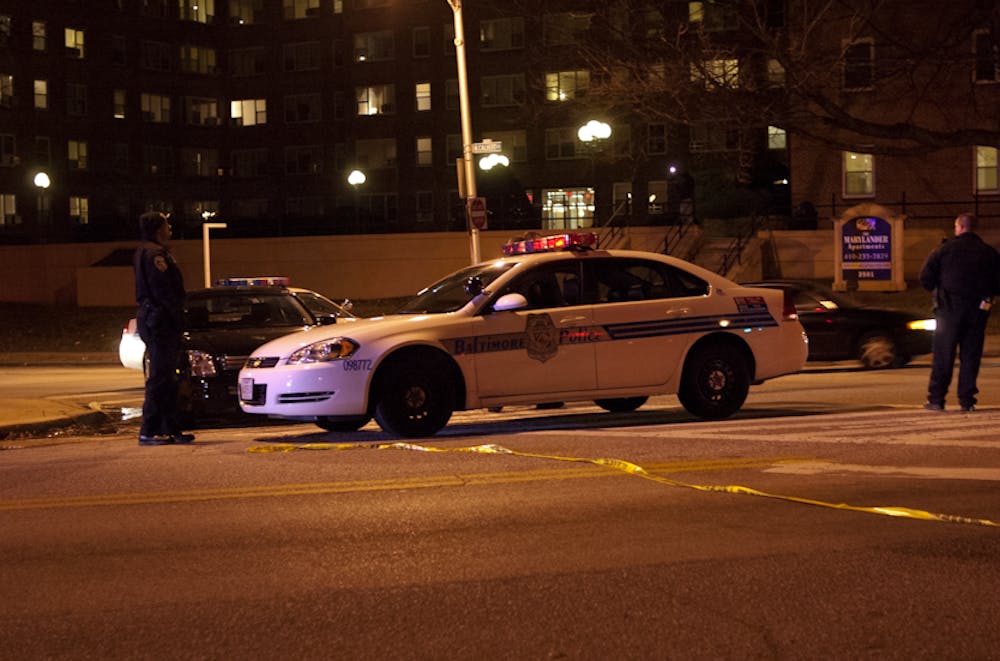The LiveSafe app, which allows users to share information and communicate with local police and safety officials, became available on the East Baltimore campus on Feb. 16.
The app is directly linked to local law enforcement at hundreds of universities, malls and workplaces across the world, from the University of Wellington in New Zealand to the Xerox corporation in Connecticut.
It allows two-way communication between local security and the user. Through the app, the user can request a safe walk, report something suspicious and directly contact local security. The user can also share their location with a friend or family member so they can be virtually walked home.
George Economas, Hopkins Medicine’s interim vice president for corporate security, explained how the app was first introduced to the University in 2016 in Washington, D.C.
“Initially the LiveSafe app was rolled out on the D.C. campuses as a pilot to see how the program operated and for us to evaluate it because there were other products out there,” Economas said.
After testing LiveSafe, Economas said that they decided to release the app on the Homewood Campus in August 2017 for Hopkins undergraduates.
“We were very happy with its functionality, its easy usage,” he said. “So it was adopted. First Homewood rolled out, and then [because] you don’t want to overwhelm your system, we rolled it out campus by campus, to East Baltimore.”
According to Economas, the area surrounding the East Baltimore campus has twice as many occurrences of theft and arrest than Charles Village, the location of Homewood Campus.
“We sit on the Eastern District’s southern boundary. The Eastern District is one of the more high crime rate districts in the city, which is rated one of the highest crime cities in the country,” he said.
Supriya Dhaurali, a researcher on the East Baltimore campus, believes that the app can be useful to students when they walk to campus, although she does not believe the area to be dangerous.
“For the most part I feel pretty safe,” she said. “I know that there is security, I see them every couple blocks in every direction I go.”
There are specific features that Dhaurali thinks will be especially helpful.
“[I like] the one where someone can virtually follow you as you’re walking home or walking to your apartment,” she said. “That feature is the one that I think would be the most useful.”
Freshman Ben Bich, who does research at the med campus, said that the app can be useful for contacting campus security in emergency situations.
“That’s pretty important because some people don’t have the security phone number on their phone, so if they ever needed to get ahold of security they could,” he said.
Sophomore Shivani Bisen, who also does research at the med campus regularly, said that she feels safer on the Homewood Campus because of its increased security presence.
“You definitely see the security around the campus at Homewood,” she said. “[At the East Baltimore campus], even if there is security, they’re really well hidden, so you don’t know who you would go to for help.”
She is happy that the app can now be used at the East Baltimore campus.
“I feel like that would make a lot of students who do research on the med campus feel a lot safer,” she said.
Economas hopes students use the app to help security do their work more efficiently.
“Security can’t be everywhere all the time,” he said. “So if someone sees something suspicious or sees something concerning they can get that information directly to us. They could take a picture and send it to us, and it comes across anonymously as well. It gives us the opportunity to react.”
Since the app was first released, Economas said that 1,558 people have downloaded it, 62 people have requested safe walks and three people have submitted safety tips. Economas emphasized that one of the app’s main functions is to give users the tools to communicate.
“If you see something, say something. Let the professionals worry about it after that,” he said. “Don’t be the person who sits there and says ‘I wish someone had said something.’ We’re giving you a tool you can use so that you can [communicate] a lot easier than ever before.”





